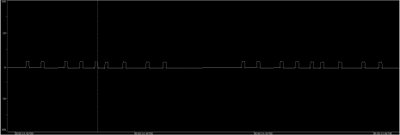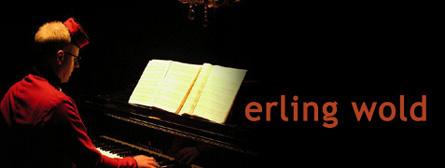
Pictured at the top is a detail of two quasi-periods of the control track, consisting of a set of nine positive-going pulses. Each pulse is about .25 msec wide, actually .27 for the 'blue box' I built so many years ago, and the time between pulses is what controls the servos. That is, the time between pulse 0 and pulse 1 in each group of nine controls one servo, and the distance between pulse 1 and pulse 2 controls the next, and so on. The time between pulses from a fully open to a fully closed servo varies from about 1.25 msec to 2 msec, measuring from leading edge to leading edge. The leading edge of pulse 0 of next group of nine is about 6.5 seconds from the leading edge of the last pulse of the previous group of nine. The total period of the groups is not fixed - you can hear the overall pitch change as they move. My main bear is one of the two servo variety, and for that animal the interval from pulse 1 to pulse 2 controls the eyes and from pulse 2 to pulse 3 controls the mouth. Later bears had a separate control for upper and lower jaw, and if you hook Teddy to Teddy's friend Grubby®, a pleasantly disgusting and seemingly out of scale and of a different cartoon aesthetic big grub-like creature, you will find that the other pulse to pulse modulations come into play to control him as well.
Originally I sent the control signal in using a CD to cassette adaptor and then recorded actual cassettes, but as I've resurrected the project in more recent days I decided to do some surgery (note crime-scene-like photo above) and bypass the heads on the crappy built-in cassette player. I attached a mini phone jack directly past the play heads and it seems to work to send the signal in from a dime-a-dozen mp3 player. One has to be a bit careful of the levels - too high or too low on the control track and the bear becomes subject to a variety of muscle spasms or alternately is sent into a catatonic state. Also, running the low-level wires out of the bear makes it subject to radio interference, and cell phones held close to the bear can also elicit the abovementioned palsies. I went a little further and hooked up battery powered amp/speaker combination inside since the built in speaker is also pretty bad. It's meant to be heard by a small child sitting in a quiet room alone with the somewhat scary bear toy and is not quite up to entertaining a packed opera house.





1 comment:
Now you are scaring me.
Post a Comment